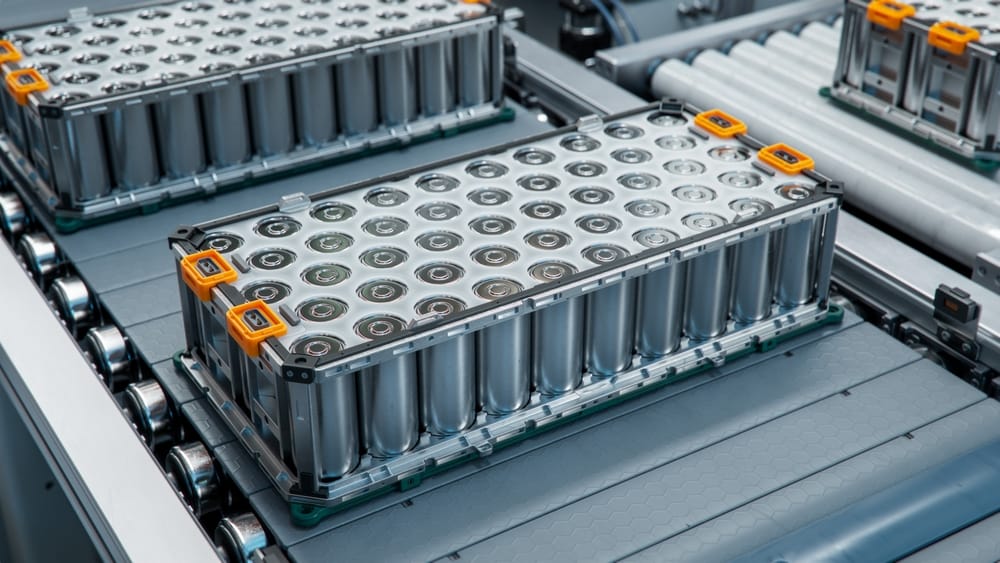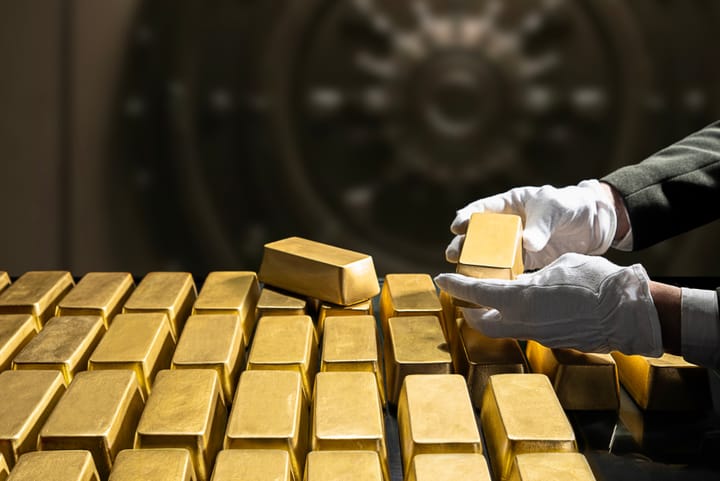Inside the Battery Economy: How the Lithium-Ion Industry Works

Lithium-ion batteries, the powerhouses of the modern world, fuel our phones, laptops, electric vehicles, and industrial storage systems, underscoring their pivotal role in our daily lives and the global economy.
They store and release energy by moving lithium ions between two internal layers, the cathode and anode.
When charging, ions move into the anode; when discharging, they return to the cathode, generating current.
Behind the seemingly simple principle of lithium-ion batteries lies one of the most intricate and sophisticated supply chains in modern manufacturing. This network seamlessly connects mines in Australia and the Congo, chemical refineries in China, and gigafactories across Asia, Europe, and North America.
Raw Materials and Origins
Every lithium-ion battery depends on five key materials: lithium, nickel, cobalt, manganese, and graphite. Each plays a specific role in energy storage, stability, or conductivity.
| Material | Function | Main Producing Countries (2025) | Source Type |
|---|---|---|---|
| Lithium | Carries charge between electrodes | Australia, Chile, China, Argentina | Brine and hard-rock deposits |
| Nickel | Increases energy capacity | Indonesia, Philippines, Russia, Australia, Canada | Laterite and sulfide ores |
| Cobalt | Stabilizes the cathode | DRC, Indonesia, Russia, Australia, Canada | By-product of copper/nickel mining |
| Manganese | Improves structural stability | South Africa, Australia, Gabon | Ore mining |
| Graphite | Stores lithium ions in the anode | China, Mozambique, Madagascar, Brazil | Natural and synthetic |
Sources: U.S. Geological Survey (USGS, 2025); International Energy Agency (IEA, 2025)
Afghanistan, a potential game-changer in the industry, is believed to hold significant lithium reserves in provinces like Ghazni, Herat, and Nimroz. Once developed, these reserves could rank among the world’s largest deposits, promising a bright future for the industry.
Refining: From Raw Material to Chemical Input
Mining provides ore and brine that contain only trace amounts of usable metal. Refining follows mining and transforms this raw material into high-purity compounds used in battery manufacturing.
- Lithium refining converts mined rock or salt brine into lithium hydroxide or lithium carbonate, the two standard forms used in cathode materials.
- Nickel and cobalt are refined into nickel sulfate and cobalt sulfate, key ingredients for high-performance batteries.
- Manganese is refined into high-purity manganese sulfate, a regular component in modern batteries that improves stability and lowers material costs (it is more abundant and less expensive than cobalt or nickel and can partially replace them in many cathode designs).
- Graphite is purified and shaped into fine particles for the anode; some producers also add a silicon coating to increase energy capacity.
These refined materials are known as precursors — the first stage in the production of active battery materials.
Processing and Active Materials
Once metals are refined, they are turned into materials that actually store and release energy. The positive side of the battery, called the cathode, is made from lithium mixed with other metals such as nickel, cobalt, and manganese. The negative side, the anode, is mainly made from graphite.
These two sides are placed opposite each other inside the cell, with a thin plastic film in between to keep them from touching. A clear liquid called the electrolyte fills the space, allowing the lithium ions to move back and forth when the battery charges or discharges.
Each small container with these components is a cell. Cells are combined into modules, and several modules together form a battery pack — the large unit found in electric vehicles or storage systems.
(In most electric cars, a single battery pack contains several thousand individual cells.)
Where Batteries Are Made
Most refining and manufacturing occur in East Asia, led by China, South Korea, and Japan.
| Stage | Global Capacity (2025) | China’s Share (%) | Main Competitors |
|---|---|---|---|
| Lithium refining | ~1.4 million t LCE | 60–65 | Chile, Australia |
| Nickel & cobalt refining | ~1.8 million t Ni eq | 70 | Indonesia, Japan |
| Cathode & anode materials | ~6 million t | 85 | South Korea, Japan |
| Cell manufacturing | ~3.5 TWh/year | 82 | South Korea, Japan, U.S., EU |
Sources: IEA Global EV Outlook 2025; USGS 2025
China’s position comes from early state support, full chemical integration, and proximity to major automakers. CATL and BYD together produce over 1 TWh of batteries annually — more than all Western producers combined. A 1 GWh plant can supply enough cells for about 15,000 electric vehicles per year.
Key Industry Players (2025)
Battery production follows a continuous chain that begins with mining and ends with the integration of finished battery packs into vehicles and energy systems. Each stage involves different companies and regions.
| Stage | Leading Firms | Description |
|---|---|---|
| Mining | Albemarle, SQM, Pilbara Minerals, Glencore, Vale | Extract lithium, nickel, cobalt, manganese, and graphite from ore or brine deposits |
| Refining | Ganfeng Lithium, Tianqi Lithium, Huayou Cobalt, Glencore, Sumitomo Metal Mining | Convert mined material into battery-grade chemical compounds such as lithium hydroxide, nickel sulfate, and cobalt sulfate |
| Active Material Production | BASF, Umicore, BTR, LG Energy Solution, CATL | Process refined chemicals into cathode and anode powders used in battery cells |
| Cell Manufacturing | CATL, BYD, LG Energy Solution, Panasonic, Samsung SDI, Tesla | Assemble electrodes, electrolytes, and separators into finished cells and battery packs |
| Vehicle and System Integration | Tesla, BYD, Volkswagen, Hyundai, Rivian | Install battery packs into electric vehicles or large-scale energy storage systems |
Output and Global Trade
Global battery-cell production in 2025 is estimated at 3–3.5 terawatt-hours (TWh), valued at more than USD 500 billion. Around 80% of this output comes from Asia, with China alone responsible for roughly 70% of global exports, highlighting the region's dominance in the battery industry. Central logistics and trade hubs include Shanghai, Busan, Nagoya, Rotterdam, and Houston.
Critics and Concerns
Despite rapid growth, the battery industry faces persistent challenges:
- Environmental impact: Lithium extraction consumes large volumes of water in dry regions; nickel refining generates tailings; graphite purification involves hazardous chemicals.
- Governance: Artisanal cobalt mining in the Democratic Republic of Congo continues to raise labor and transparency concerns.
- Supply concentration: Heavy dependence on China for refining and component manufacturing creates vulnerability for Western markets.
- Emerging deposits: Afghanistan’s lithium fields remain undeveloped, with uncertain regulation and infrastructure.
Sources: IEA Critical Minerals Outlook 2025; OECD Due Diligence Guidance 2024; UNEP 2024
Outlook
Global battery demand is projected to increase sixfold by 2035. Innovation focuses on solid-state, sodium-ion, and recycling technologies, which aim to diversify supply and reduce the use of scarce metals.
Still, projections from the IEA and World Bank show that lithium, nickel, and graphite will remain essential through at least the 2040s. Building refining capacity outside Asia and improving recycling efficiency are key to securing long-term supply stability.
Summary
The lithium-ion industry links mining, chemistry, and high-precision manufacturing across continents. Raw materials are extracted in Africa, Australia, and South America, refined primarily in China, and assembled into batteries that power vehicles, infrastructure, and devices worldwide.
Understanding this structure is central to understanding the economics of the energy transition — where access to minerals and refining capacity is as strategic as technology itself.
Sources
- U.S. Geological Survey (USGS) – Mineral Commodity Summaries 2025
- International Energy Agency (IEA) – Global EV Outlook 2025; Global Critical Minerals Outlook 2025
- OECD – Due Diligence Guidance for Responsible Mineral Supply Chains (2024)
- UNEP – Environmental Review of Battery Supply Chains (2024)
- World Bank – Minerals for Climate Action 2024 Update
- IMF – Commodity Concentration and Strategic Vulnerability in Critical Minerals (2025)
- Reuters / Financial Times (2024–2025) – Market data and corporate disclosures



